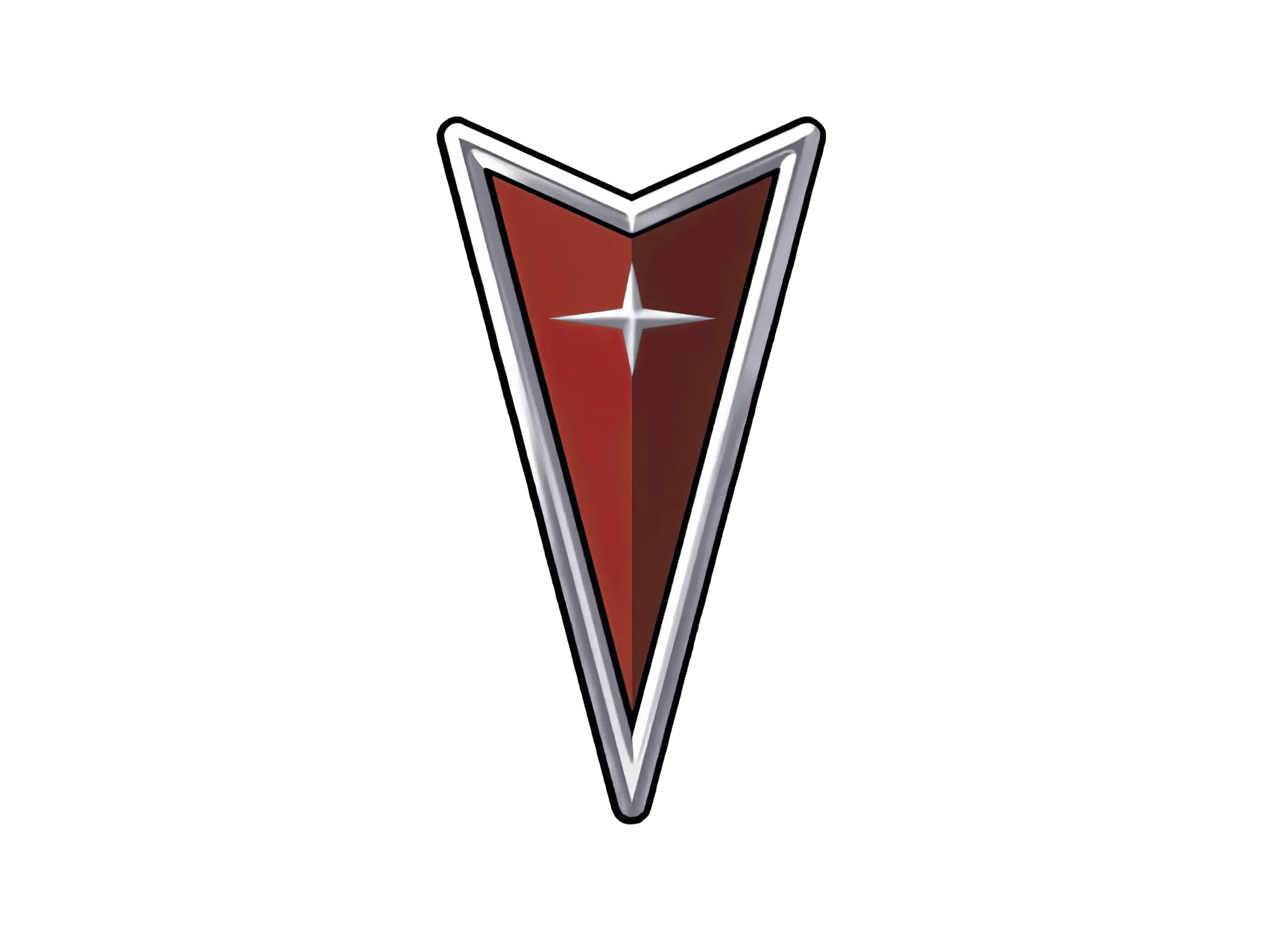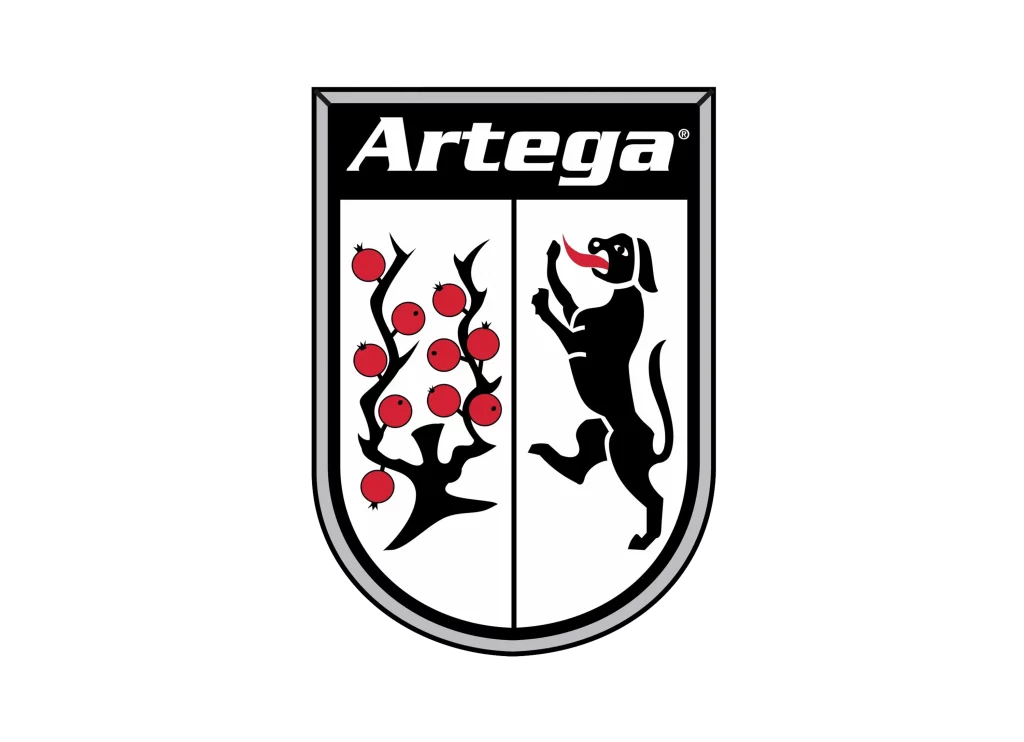Pontiac logo

The Pontiac logo underwent several changes throughout the years, with the arrowhead being the most recognizable symbol associated with the brand. The arrowhead was introduced in 1956 and became the official logo of Pontiac in 1959.
The arrowhead logo symbolizes speed, power, and direction, reflecting the sporty and performance-focused image of the brand. The shape of the arrowhead was also inspired by the native American weapons, adding a touch of the brand’s heritage to the design.
In the center of the arrowhead logo, there is a silver streak that represents the brand’s forward-thinking approach and innovation. The streak also symbolizes the brand’s commitment to delivering high-performance vehicles that offer a thrilling driving experience.
The Pontiac logo went through a redesign in 1997, with the arrowhead remaining the centerpiece of the emblem. The newer design featured a more stylized arrowhead, with a bolder and more aggressive look.
Pontiac Brand Overview
1926
General Motors
Detroit, Michigan, United States
No official website
Pontiac was an American car brand that was part of the General Motors (GM) family from 1926 to 2010. It was founded in 1899 as the Pontiac Spring and Wagon Works, which initially produced horse-drawn carriages. Pontiac’s first automobile was produced in 1907, and in 1909 the company merged with the Oakland Motor Company, which was later absorbed by GM.
In the early years, Pontiac was known for producing affordable, reliable cars that appealed to a younger market. The brand’s popularity grew in the 1950s and 1960s, thanks in part to its iconic muscle cars like the GTO and Firebird. However, in the late 1990s and early 2000s, Pontiac began to struggle due to declining sales and a lack of new, innovative models.
In 2007, GM announced that it would be phasing out the Pontiac brand as part of a restructuring plan aimed at improving the company’s financial position. The last Pontiac vehicle, a 2010 Pontiac G6, rolled off the assembly line on November 25, 2009.
Today, Pontiac remains a beloved brand among car enthusiasts and collectors, with many of its classic models still in circulation and sought after by collectors.
Pontiac History
Pontiac is an American car brand that holds a special place in the hearts of car enthusiasts, especially those who love classic American muscle cars. While the brand is no longer in production, its legacy lives on as an emblem of the golden age of American automotive design and engineering.
The history of Pontiac dates back to the turn of the 20th century when the Pontiac Spring and Wagon Works, a company that produced horse-drawn carriages, decided to venture into the production of automobiles. The first Pontiac car was produced in 1907, but it wasn’t until 1926 that Pontiac became a fully-fledged division of General Motors.
In the early years, Pontiac cars were positioned as affordable and practical vehicles for the everyday driver. However, in the 1950s, Pontiac started to focus on performance and began to produce muscle cars that quickly became popular among young drivers. Some of the most iconic Pontiac muscle cars include the GTO, Firebird, and Trans Am.
The GTO, introduced in 1964, is widely considered to be the first true muscle car. It was powered by a 6.4-liter V8 engine that produced 325 horsepower and could go from 0 to 60 mph in just over six seconds. The Firebird, introduced in 1967, was Pontiac’s answer to the Chevrolet Camaro and became famous for its sleek design and powerful engine options. The Trans Am, introduced in 1969, was a high-performance version of the Firebird that featured upgraded suspension, brakes, and engine options.
Throughout the 1970s and 1980s, Pontiac continued to produce muscle cars and other high-performance vehicles. However, in the 1990s, the brand started to shift its focus towards more practical and family-oriented vehicles. This was reflected in the introduction of models like the Grand Am and Grand Prix, which were popular among families and commuters.
Despite efforts to rebrand the company in the 2000s, Pontiac struggled to compete in a changing automotive landscape. In 2009, General Motors announced that it would be discontinuing the Pontiac brand as part of a larger restructuring plan in the wake of the financial crisis.
Today, Pontiac cars are highly sought-after by collectors and enthusiasts. The brand’s legacy lives on as a symbol of American automotive design and engineering, and its iconic muscle cars continue to inspire and captivate car enthusiasts around the world.











